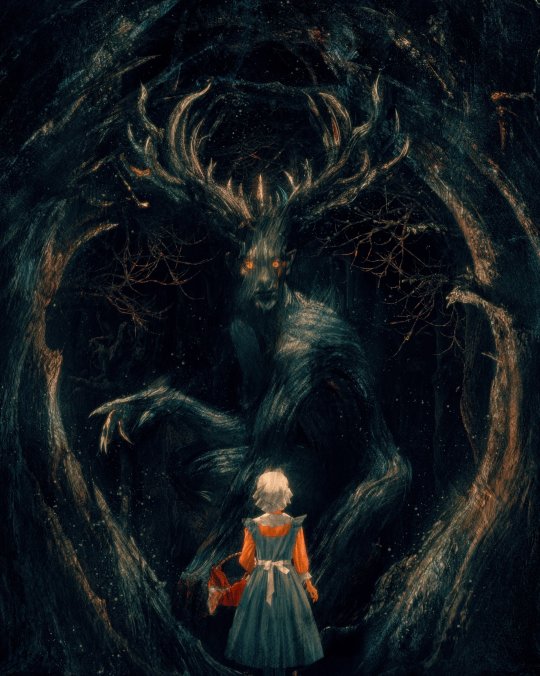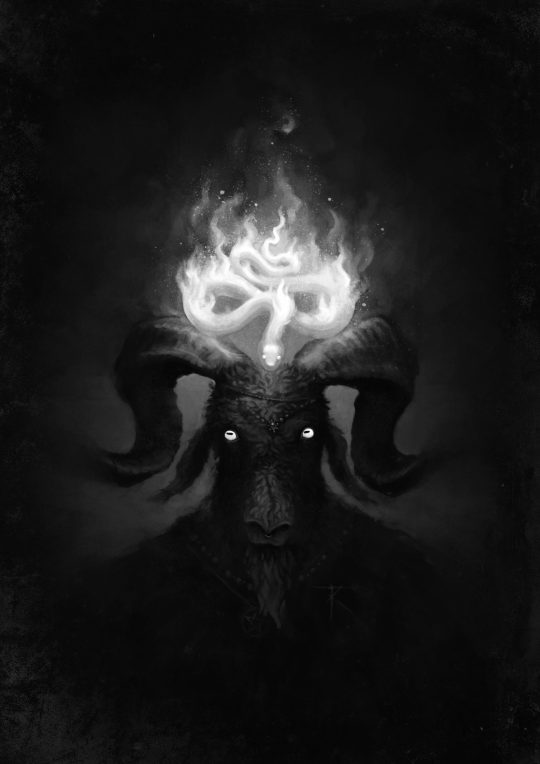Text
Offerings of the Hollow Hills:
Being an Index of Propitiations Beloved by the Gloaming Folk

What follows is a catalog of sorts, which I compile with the aim of using my own knowledge and experience to produce an index of offerings that have proven themselves especially effective in propitiating the Gloaming Folk. This is based only upon what I have witnessed personally over many years of Gloaming Intercession, and as such, it is in no way meant to serve as a definitive guide. However, each thing listed herein is something I have directly observed the Twilight Brood accept, not just with recognition or gratitude, but with zestful relish. The oblations in question may be separated into several makeshift categories, which include:
Botanical Offerings;
Bluebells
Pearlwort,
Foxgloves
Elecampane
Clover,
Thistle,
Blessed Thistle,
Harmel,
Wood Anemone,
Cowslip,
Hops,
Lily of the Valley,
Hyssop,
Heather,
Wood sorrel,
Moonflowers,
Daturas,
Snowdrops,
Chamomile blossoms,
Aconite blossoms
Saffron Crocus,
Witch Hazel flowers,
Daisy chains,
Poppy blossoms/pods
Roses/Rosehips
Lotus blossoms/pods,
Dandelion root,
Mandrake root,
Bryony root,
Iris root,
Viburnum root,
Wild Onions/Leaks & their blossoms,
Yew Cones
All manners of Moss,
All manners of Lichen,
All manners of Fungus (especially Amanitas, Psilocybins, and Polypores,)
All manners of Ferns (particularly Moonworts, Staghorns, and Maidenhairs,)
Fern Dust (fern spores,)
Tobacco Leaf/Flowers
Sweet Wormwood (Artemisia Annua,)
Thyme,
Tarragon,
Mint (especially blossoms,)
Holly berries,
Belladonna blooms/berries,
Hawthorn blooms/berries,
Rowan blooms/berries,
Blackthorn blooms/berries,
Elder blooms/berries,
Cherry blooms/fruits,
Crabapple blooms/fruits,
Hazel blooms/nuts,
Elm blooms/samaras,
Maple water/samaras,
Horse Chestnuts,
Oak galls,
Acorns,
Nutmegs,
& Radishes.
Culinary Offerings;
Honey,
Whole Milk,
Raw Butter,
Cream,
Bread,
Biscuits,
Spongecake,
Welsh cakes,
Shortbread,
Cheese
Freshly gathered Eggs,
Wine,
Ale,
Mead,
Damiana Liqueur,
& All freshly gathered Berries.
Personal Offerings;
Blood,
Tears,
Hair (especially whole plaits,)
& Bones (such as teeth.)
Zoological Offerings;
Animal bones,
Animal skins,
& Iridescent insect casings/wings.
Telluric Offerings;
Wild Quartz,
Gold,
Tin,
Copper,
& Tektites.
Intangible Offerings;
Time,
Music (beautiful singing in particular,)
& Vows.
Miscellaneous Offerings:
Sacred Waters,
Honeycomb,
Found Arrowheads.
Irreplaceable items of emotional significance,
& Anything homegrown and/or handmade, which was thoroughly imbued with earnest care and effort—especially when it is synchronized with the seasonal rhythms of the world (ie. Pumpkin pie made by hand, from scratch, using homegrown pumpkins, during the Autumnal window best suited to your harvesting of such gourds.)
——————————————————————————
Art Credit — Alexandria Dvornikova
335 notes
·
View notes
Text
Nine Herbs Charm
I always wanted to do a Nine Herbs Charm and this autumn i finally did it!!

The Nigon Wyrta Galdor (NWG) or, popularly, the Nine Herbs Charm, is an Old English healing spell—a galdor—intended to remedy a wound of some kind. The charm is recorded in a single manuscript, Harley MS 585 (ff 160r—163r), commonly known today as the Lacnunga (Old English ‘remedies’), which the British Museum dates to the 9th or early 10th century. The topics, themes, and entities the charm touches upon, such as animism, emphasis on the numbers nine and other multipliers of three, and the invocation of the Germanic deity Odin (Old English Wōden) stem from the pre-Christianization beliefs of the Old English.
These are the nine herbs that i used in my nine herbs charm. I changed some of the herbs for related varieties that i found in the forest behind my home (cause i really wanted this charm to have a really personal note).
Mugwort -> i used "artemisia vulgaris"
Plantain -> i chose to use both "plantago major" and "plantago lanceolata"
Lamb's cress -> i chose to use "cardamine flexuosa" from the forest behind my home and "cardamine hirsuta" that grows along our lawn
Betony -> i chose to use "stachys sylvatica" instead of "stachys officinalis" because that's the only variety i found in our woods
Chamomile -> i found some chamomile along the fields in our town
Nettle -> i chose to use 'normal' stinging nettles
Crab apple -> we have "malus sylvestris" in our garden so i used its leaves (i didn't use the apples cause i started collecting in November)
Chervil -> i used "anthriscus sylvestris"
Fennel -> i bought some fresh regional fennel from a local farmer's market, cut it into small pieces and slowly dried it in the oven
Mugwort | plantain | lamb's cress


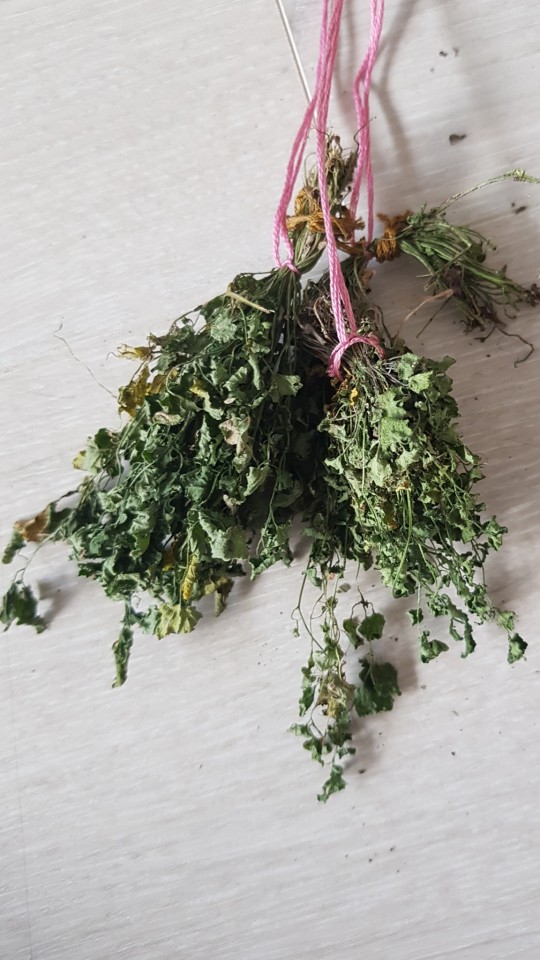
Betony | chamomile | nettle

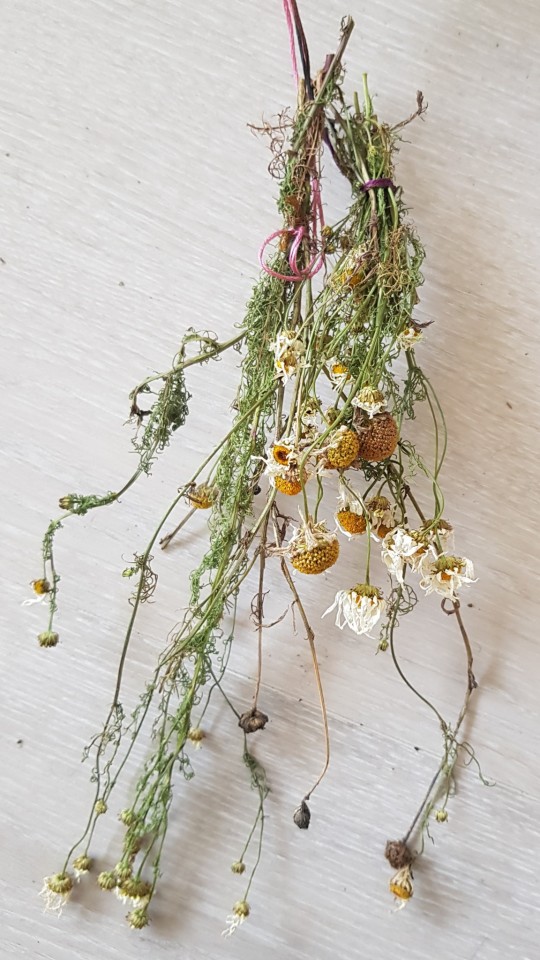
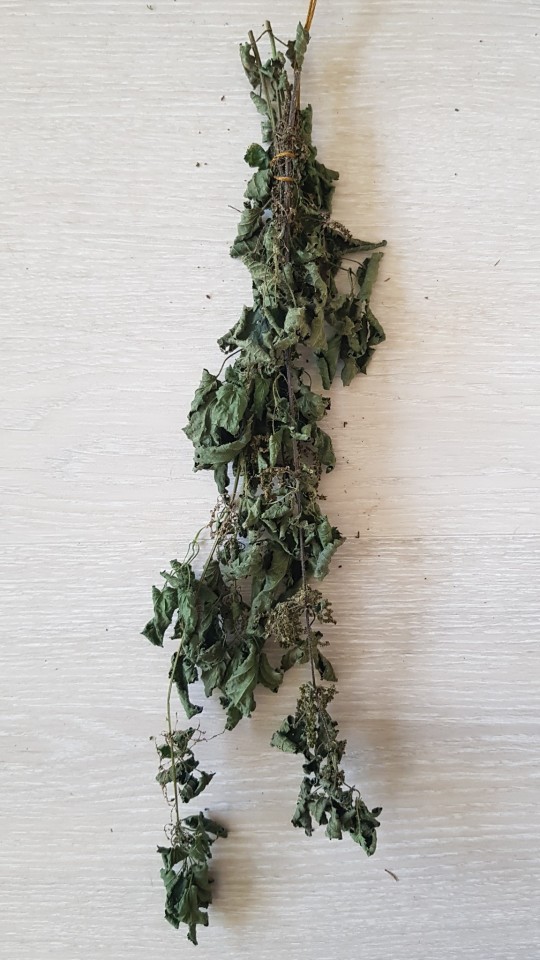
Crab apple | chervil | fennel
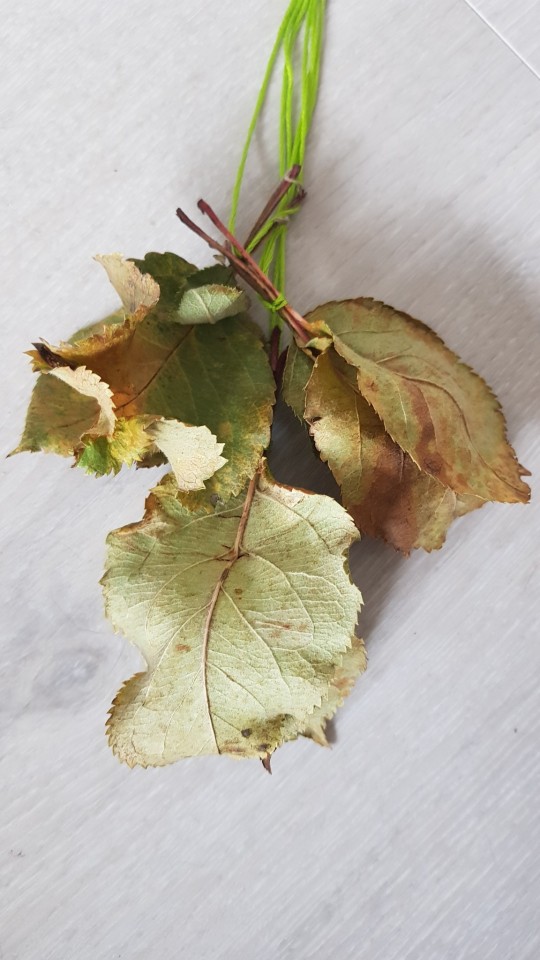
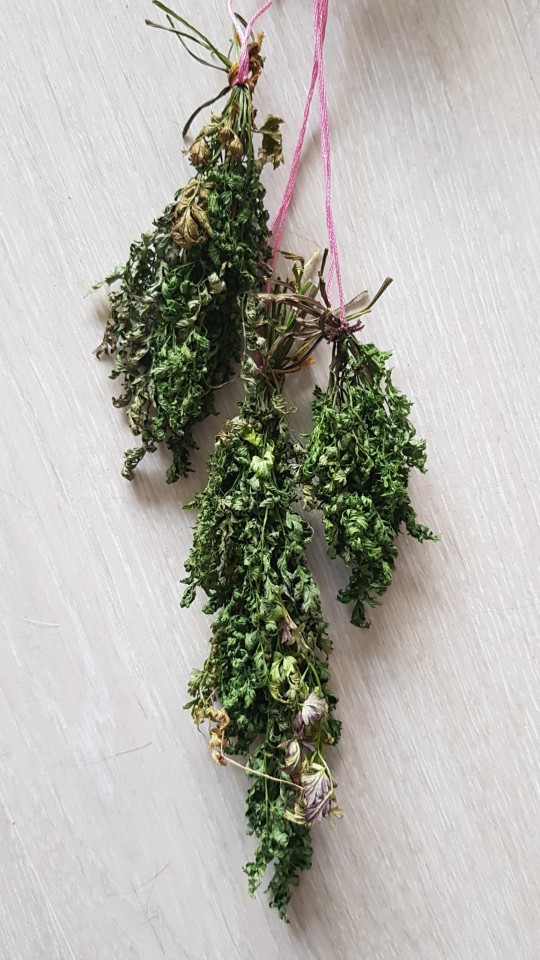

And here's an excerpt of a translated version of the Nine Herbs Charm:
Remember, Mugwort,
what you brought to pass,
what you readied,
at Regenmeld.
You’re called Una, that most ancient plant.
You defeat three, you defeat thirty,
you defeat venom, you defeat air-illness;
you defeat the horror who stalks the land.
And you, Waybread, plant-mother!
You’re open to the east, yet mighty within:
Carts creaked over you, women rode over you,
over you brides bellowed, over you bulls snorted!
You withstood it all—and you pushed back:
You withstood venom, you withstood air-illness,
you withstood the horror who travels over land.
Now, this plant is called Stune, she who grows on stone:
She defeats venom, she grinds away pain.
She’s called Stithe, she who withstands venom;
she chases away malice, casts out pain.
This is the plant that fought against the wyrm.
She is mighty against venom, she is mighty against air-illness;
she is mighty against the horror who travels over land.
You, Venom-loathe, go now!
The less from the great,
the great from the less,
until for both he receives a remedy.
Remember, Chamomile,
what you brought to pass,
what you accomplished,
at Alorford,
that no one should lose their life to disease,
since for him Chamomile was prepared.
Finally, this plant is known as Wergulu,
who a seal sent over sea-ridges,
to aid against venom.
These nine plants defeat nine venoms!
A wyrm came slithering, and yet he killed no one,
for wise Wōden took nine glory-twigs
and smote the serpent,
who flew into nine parts!
(...)
She stands against pain, she stands against venom,
she is potent against three and against thirty,
against a foe’s hand, against great guile,
against malice and bewitchment
from animal and spirit.
Now! May the nine plants do battle against nine glory-fleers,
against nine venoms and against nine air-diseases,
against the red venom, against the running venom,
against the white venom, against the blue venom,
against the yellow venom, against the green venom,
against the black venom, against the blue venom,
against the brown venom, against the purple venom,
against wyrm-blister, against water-blister,
against thorn-blister, against thistle-blister,
against ice-blister, against venom-blister.
If any venom comes flying from the east,
or any comes from the north,
or any from the west over folk!
(...)
(Source)
290 notes
·
View notes
Text
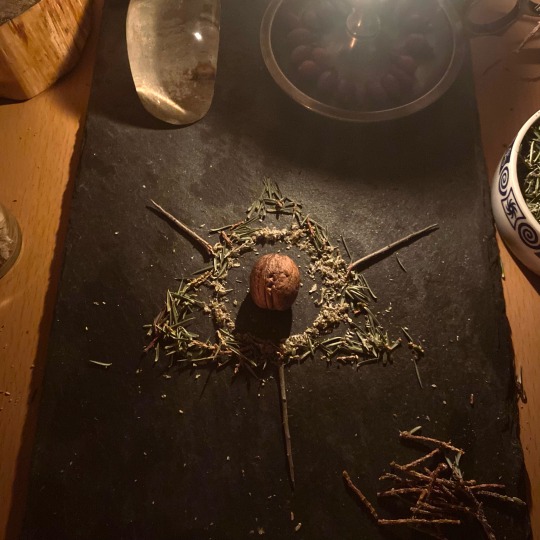

Making a pouch to protect myself against all harmful energies
#witchcraft#traditional witchcraft#green witch#folk witch#herbal magic#pagan witch#unconscious#folk magic
16 notes
·
View notes
Text
In the beginning there was space and the space was frightening. Man felt lost within it, confronted as he was by its vastness, a source of uncertainty and mystery. It took countless centuries for man to learn to know the earth, investing in it and mastering it. Subject to the whims of nature, washed by the rains and dried by the winds, warmed by the sun and chilled by the frosts, amazed or stricken by phenomena he was utterly incapable of grasping, man felt like an intruder inside a wild and still untamed nature, or at least this is how he perceived it. He then reacted with all the means at his disposal. He learned to know the plants and animals and assured his survival by giving them names. He deified all that threatened or awed him, and implemented propitiatory rites. In short, he developed a religious sensibility. Everywhere around him he saw traces of the invisible, traces of another reality attesting to the presence of myriad unspeakable creatures.
– Demons and spirits of de land, Claude Lecouteux.
26 notes
·
View notes
Text

Harvesting Violet roots… her spirit is so soothing to the heart. 💜
#witch#green witch#herbalism#hedge witch#witchblr#alraune#spring#ostara#witchcraft#herbal magic#magical herbalism
20 notes
·
View notes
Text




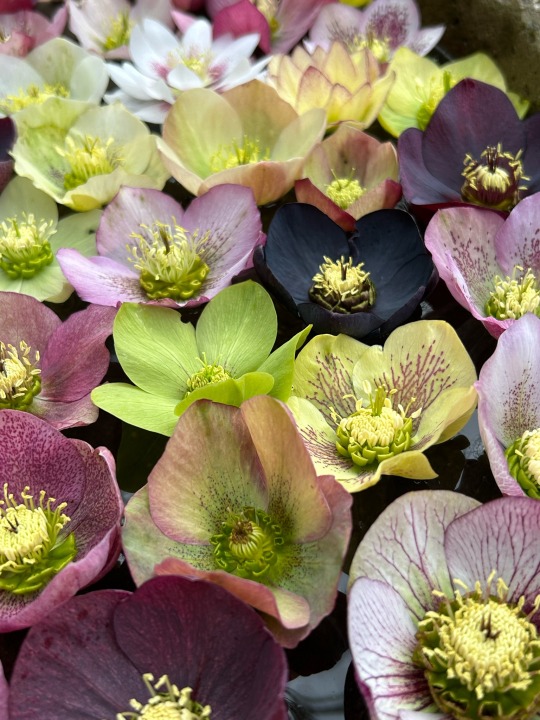
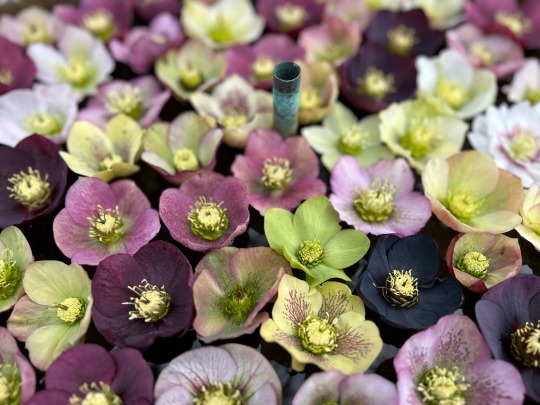
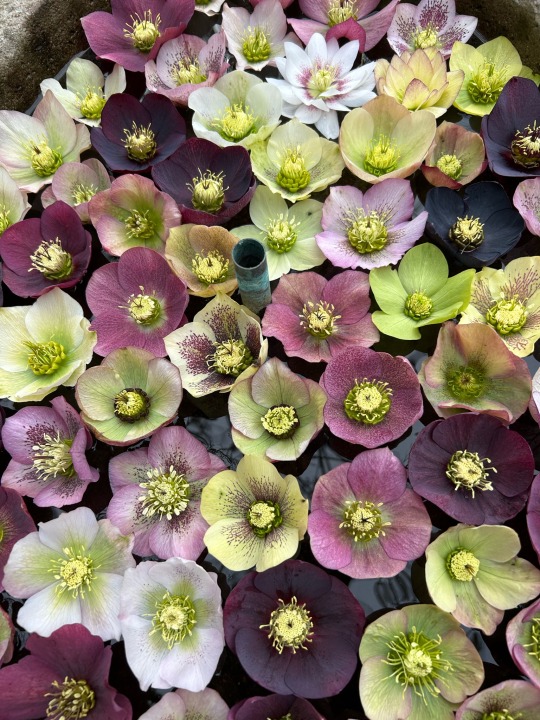
I wandered around the yard and collected one bloom per plant until I filled the fountain.
586 notes
·
View notes
Text

Today I went for a walk and found a lot of Violets under a Whitethorn and couldn’t resist to take some and make a tincture with it! They are so beautiful🥹💜
#traditional witch#witch#witchcraft#magical herbalism#herbalism#green witch#green witchcraft#folk witchcraft#folk witch#spring
6 notes
·
View notes
Text
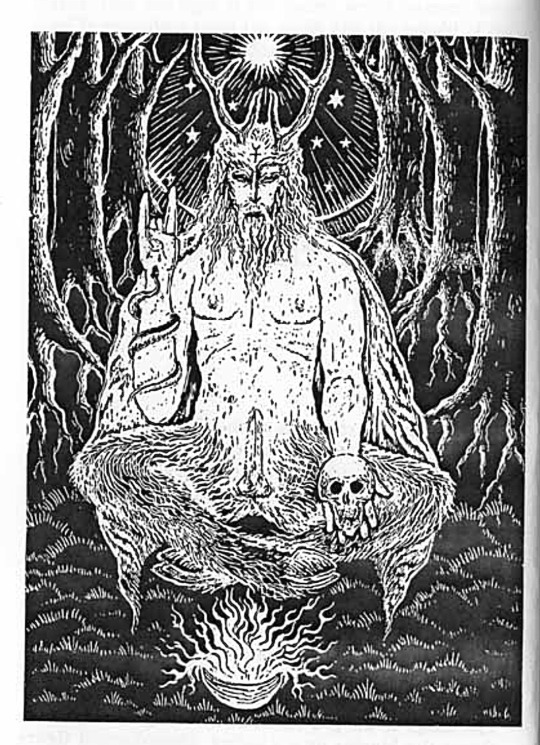
The Great One, bestower of death and generative force, imaged as a horned man is probably the very earliest conception of the Divine which crystallised, along with the iconography of the Supreme Mother, in the deeps of the prehistoric psyche. The archetype is older than the hills, old beyond reckoning, reaching back into unimaginable gulfs of antiquity, stirring primeval residues of ancestral memory, for the Horned Master as the lord of this world and the Otherworld, has ruled from the time before time, omnipotent and mysterious.
The old icons are mute testament to the initiatory encounters and transformations undergone by his shaman-priests in the vast forests, swamplands and mountains of the primeval world. The Great God was the Divine Hunter who led his worshippers upon the chase, who was propitiated and who gave luck to the faithful who pursued the herds of wild bison, deer and goats.
To these prehistoric hunters the God of the Two Horns was the very incarnation of the Giver of Life and Death, the implacable and dangerous power who held sway over the wilderness. He was the Great Sorcerer and as such he was the source of those magico-psychic faculties which enabled early humanity to survive in rough and savage environment by the guidance of cunning, intuition and magical luck-force.
However the Master was never a simple hunting-deity for he embodied the various states of spirit trance and magical ecstasy cultivated amongst those early shamans of the Pleistocene era. As the cosmic god of life and death the Horned One was the Janus-faced divinity who stood between the worlds, between the realms of light and shadow, day and night, partaking of both and transcending them in the highest state of consciousness.
- Masks of Misrule; The Horned God & His Cult in Europe, Nigel Jackson
110 notes
·
View notes
Text
“As you set out further into your journey deeper into our story remind yourself of the value of enchantment. Learning how to become enchanted is the beginning of learning how to enchant. But enchantment is frightening. Letting go of oneself enough to enter into a story that you don't fully as yet understand, to agree to work along its plot and come to its conclusions requires both bravery and subtlety but most of all it requires love. I have heard it said that subtlety and cunning are the gift of the Master, love and passion are the gift of the Lady and courage is the gift you give yourself as a representative of mankind and mankind's dignity.”
– A deed without a name, Lee Morgan.
23 notes
·
View notes
Photo
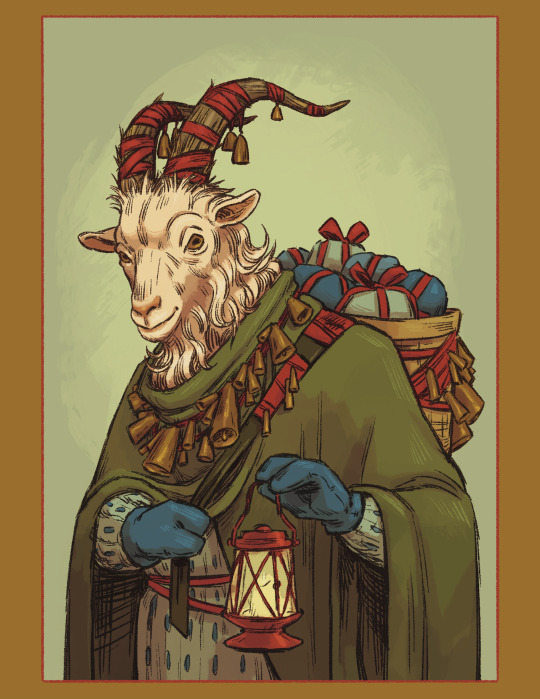
Yule Goat is here to greet you and wish you a merry solstice, may your winter festivities be joyous and safe ✨
[prints available here]
10K notes
·
View notes
Text
“During the trial of the Aberdeen witches in the 16th century, Andro Man described a Sabbat meeting at which he saw the Old One, “….come out of the snow in the likeness of a stag.” This was an encounter with one of the most primal, archaic divinities of the European folk-soul - the ancestral Horned god of death, fertility and mantic ecstasy, the underworld king whom Welsh lore calls Gwyn ap Nudd, King of Annwvyn who reaches far back to the common Celtic figure of Vindonos, son of Nudons. At the start of the winter months he is Master of the Wild Hunt, and his frenzied and ghostly chase is accompanied by his primary totems of stag, hound, raven and snow goose, Old Hornie is the fearsomely rough, strange god who rides out a-hunting during the paradoxical periods of ritual reversal, the ‘time between the times’, The Horned One’s eerie pack, white of coat and red of ear, are called Yell Hounds - a worn-down form of the term ‘Gabriel Hounds’; it is significant in this respect that in mediaeval funeral processions the bier was called ‘St. Gabriel’s Wain’. Here the archangel with his trumpet has assimilated the heathen archetype of the god of the Furious Host who winds his horn to summon the spirits of the dead.”
— Nigel Jackson - Masks of Misrule: The Horned God & His Cult in Europe
89 notes
·
View notes
Text
The Devil lives here.
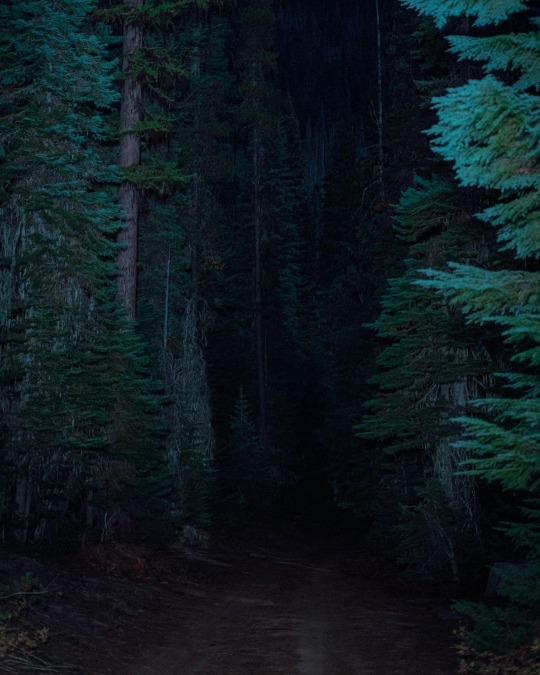
by billsplawn
4K notes
·
View notes
